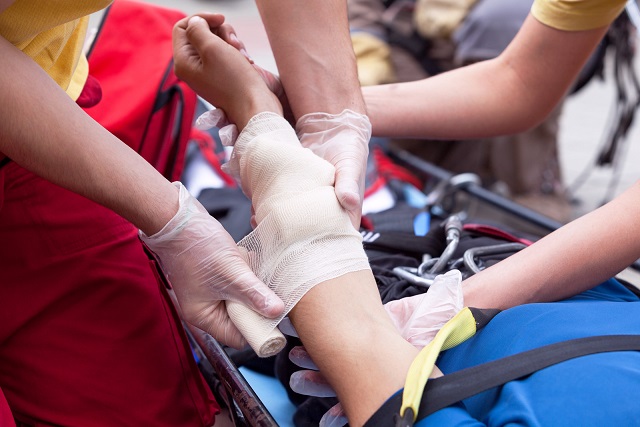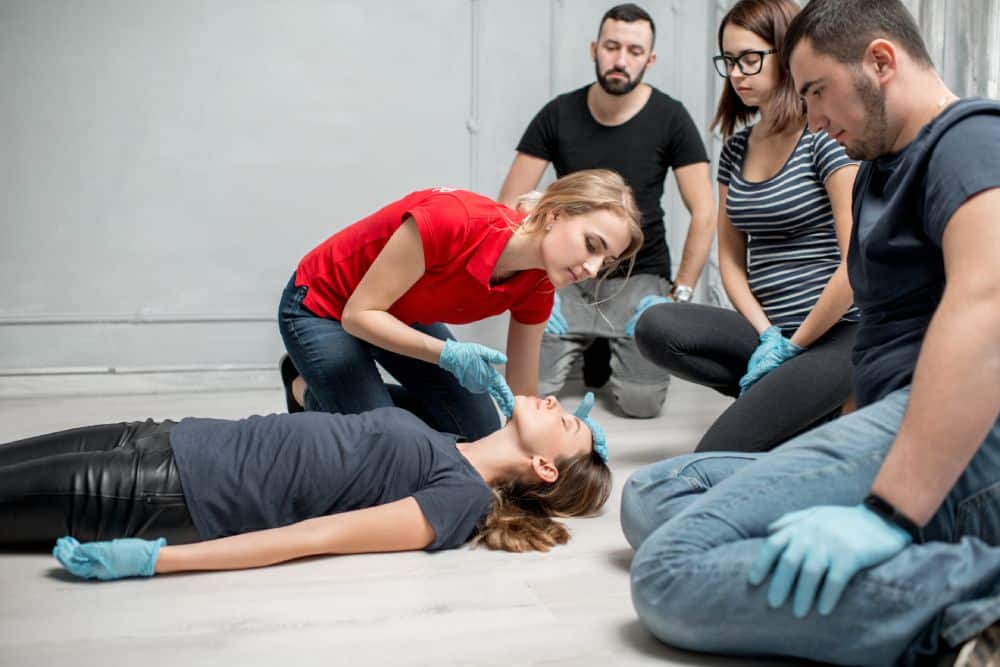Introduction
In today's world, emergencies can strike at any moment, and being prepared is essential. Among the crucial skills that can conserve lives is cardiopulmonary resuscitation (MOUTH-TO-MOUTH RESUSCITATION). Teenagers stand for an Canberra First Aid Course Near Me essential population that can be trained to react successfully in emergency situations. By outfitting them with CPR training, we not only empower them with life-saving skills yet additionally foster a culture of preparedness and responsibility. This article checks out the relevance of CPR training for teenagers, what to anticipate in emergency treatment programs, and exactly how these abilities add to their individual advancement and neighborhood safety.
Understanding mouth-to-mouth resuscitation Training for Teenagers: Preparing the Next Generation for Emergencies
What is CPR?
Cardiopulmonary resuscitation (CPR) is a lifesaving technique utilized during emergencies when somebody's heartbeat or breathing has actually stopped. It includes breast compressions and rescue breaths that assist maintain blood flow to vital body organs till professional medical help arrives. Understanding the basics of mouth-to-mouth resuscitation is critical for teenagers that may discover themselves in emergency situations.
Why Do Teenagers Required Mouth-to-mouth Resuscitation Training?
Teens are typically at social gatherings, sporting activities occasions, and even home events where emergencies might occur. By finding out mouth-to-mouth resuscitation, they become positive members of their community who can act decisively throughout situations. The capacity to carry out mouth-to-mouth resuscitation with confidence can transform a potentially tragic circumstance into one where lives are saved.
Benefits of Emergency treatment Courses for Teens
First help training courses do more than just educate individuals exactly how to give immediate care; they infuse self-confidence and strengthen problem-solving abilities. For teenagers, this experience can develop personality and urge CPR Course Belmont management high qualities.

- Empowerment: Expertise of first aid and mouth-to-mouth resuscitation empowers young people. Confidence Building: Effectively finishing a program provides teens with a sense of achievement. Community Service: Trained teens can offer in different settings such as institutions or sporting activities teams.
The Framework of mouth-to-mouth resuscitation Courses for Teens
Course Duration and Format
Most first aid programs are designed to fit within a couple of hours to a number of days, relying on the deepness of training used. Normally, a standard first aid course will certainly cover:
- Theory: The concepts behind first aid techniques. Practical Skills: Hands-on practice with mannequins or with simulations.
Key Components Covered in Emergency Treatment Courses
Understanding Emergency situation Situations- Recognizing when to call for help Assessing the scene for safety
- Performing premium breast compressions Providing rescue breaths correctly
- Learning how to operate an AED Importance of early defibrillation
- Techniques for grownups, kids, and infants Recognizing indications of air passage obstruction
- Cuts and scrapes Sprains and fractures
The Relevance of Accreditation in Emergency Treatment Training
Obtaining Your Emergency treatment Certificate
Completing a first aid course generally finishes in getting a qualification that confirms your abilities. This certification offers numerous purposes:
- It demonstrates proficiency in emergency response. Many companies need certification for involvement in particular events.
Keeping Qualifications Current
Just like any type of life skill, it is necessary to keep your understanding up-to-date. Most companies recommend renewing certifications every 2 years.
How Teens Can Obtain Involved with Emergency Treatment Training
Finding Regional First Aid Courses
Teenagers curious about acquiring their first aid certification must look into regional recreation center, schools, or wellness companies that offer certified programs.
Helpful Resources:
- American Red Cross St John Ambulance Local hospitals or wellness departments
Online vs In-Person Training Options
With innovations in technology, on the internet components have become popular yet may lack hands-on practice vital for really mastering techniques. A combined approach-- integrating on the internet concept with useful sessions-- might be most beneficial.
Creating Recognition Among Peers regarding Mouth-to-mouth Resuscitation Training for Teens: Preparing the Next Generation for Emergencies
Peer Education and learning Initiatives
Encouraging teens to share what they've found out with their buddies can enhance the effect of training programs:
- Forming study groups concentrated on emergency situation preparedness. Hosting workshops at colleges or area centers.
Using Social media site as a Platform
Teens today are greatly engaged on social networks systems; making use of these networks can aid spread awareness about the significance of emergency treatment training among peers.
Real-Life Stories That Highlight the Value of Mouth-to-mouth Resuscitation Training for Teens
Case Research 1: Saving a Life at College Sports Event
A teenager trained in mouth-to-mouth resuscitation had the ability to save their friend's life throughout a soccer match when he broke down on the field because of cardiac arrest. Their fast reasoning permitted them to provide appropriate chest compressions till emergency solutions arrived.
Case Research study 2: Family Members Emergency Situation at Home
Another example entailed siblings that had actually taken a first aid course together. When their younger bro unintentionally choked on food during dinner, they instantly knew what actions to take due to the fact that they remembered their training-- leading them successfully with the emergency.
Frequently Asked Questions (FAQs) Concerning Teenager Mouth-to-mouth Resuscitation Training
1. What age ought to teenagers begin taking CPR courses?
Most organizations advise starting as early as 12 years old; nevertheless, younger children can additionally discover standard ideas through ideal programs tailored to their age group.
2. The length of time does it take to finish an emergency treatment course?
Programs usually range from 4 hours approximately 16 hours depending upon web content deepness-- the average being around 8 hours.
3. Exist any type of requirements prior to enrolling?
No official prerequisites exist; nevertheless, it's practical if individuals have an understanding of basic clinical terms.

4. Will I get accreditation after finishing my course?
Yes! Upon successful conclusion and passing any required analyses you'll obtain a main emergency treatment certification legitimate for 2 years.
5. Can I take these programs online?
Lots of organizations offer hybrid styles incorporating on the internet concept with called for functional sessions kept in person-- this is recommended by market standards.
Get more info
6. Is it required to renew my qualification periodically?

Conclusion
In verdict, equipping teenagers with knowledge about cardiopulmonary resuscitation (CPR) via specialized training programs is invaluable not only for their development however likewise improves community security generally. With reliable training resources available-- from local courses using detailed direction on both standard first aid techniques as well as innovative life assistance methods-- it's easier than ever before for young individuals anxious regarding making an impactful distinction throughout emergencies!
As we move on into an unpredictable world filled with challenges requiring quick activity-- allow us spend our efforts towards educating this future generation so they're prepared not just academically yet likewise virtually geared up when faced versus real-life scenarios demanding immediate feedbacks like those requiring prompt interventions such as doing efficient cardiopulmonary resuscitation (CPR).